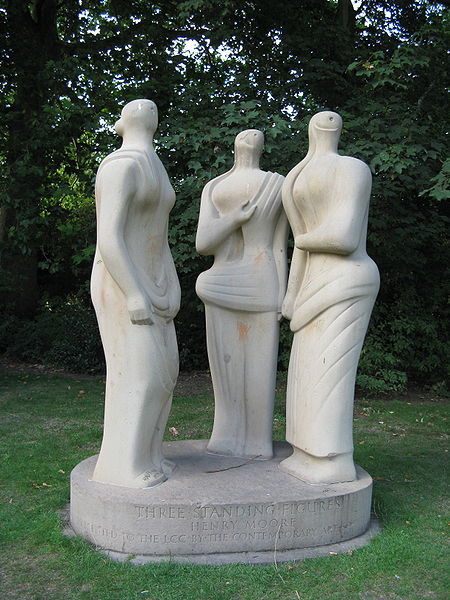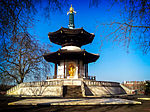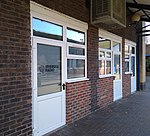Three Standing Figures 1947
1947 sculpturesBuildings and structures completed in 1948Buildings and structures in BatterseaGrade II listed buildings in the London Borough of WandsworthGrade II listed statues in London ... and 7 more
Outdoor sculptures in LondonSandstone sculpturesSculptures by Henry MooreSculptures of women in the United KingdomStone sculptures in the United KingdomStone statuesTourist attractions in the London Borough of Wandsworth

Three Standing Figures 1947 (LH 268) is a large stone sculpture by Henry Moore. It was made in 1947–48, and exhibited at London County Council's first Open-Air Sculpture Exhibition at Battersea Park in 1948. Donated to the council, it has been exhibited at the park since 1950. It became a Grade II listed building in 1988.
Excerpt from the Wikipedia article Three Standing Figures 1947 (License: CC BY-SA 3.0, Authors, Images).Three Standing Figures 1947
Maple Leaf Walk, London Battersea (London Borough of Wandsworth)
Geographical coordinates (GPS) Address External links Nearby Places Show on map
Geographical coordinates (GPS)
| Latitude | Longitude |
|---|---|
| N 51.47813 ° | E -0.15691 ° |
Address
Three Standing Figures
Maple Leaf Walk
SW11 4PJ London, Battersea (London Borough of Wandsworth)
England, United Kingdom
Open on Google Maps









